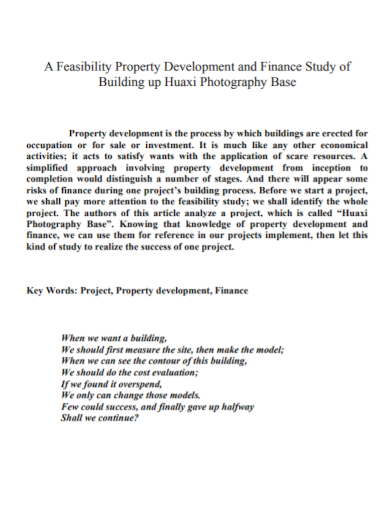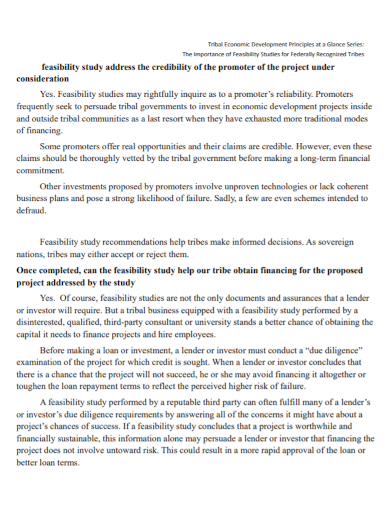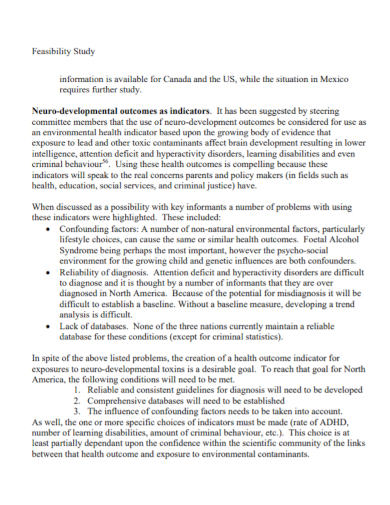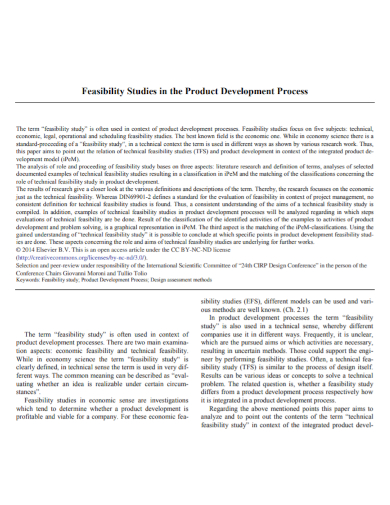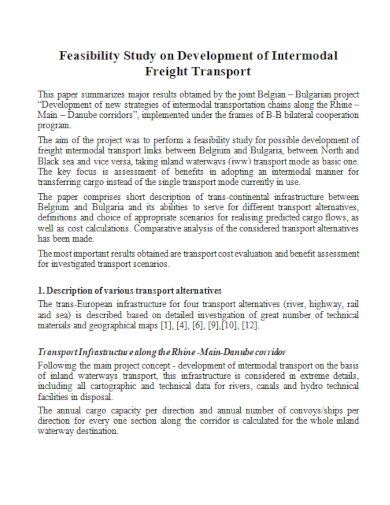Any sort of project and project development requires much time, resources, and effort to ensure its fulfillment. Project developers would normally now want to see their venture fail. Of course, no one wants to see valuable resources to go to waste. Most of the time, project developers would often conduct a feasibility study early on, before development even begins. It is best to know whether a project is feasible or not, set parameters for problems you might encounter along the way, and find solutions for problems regarding the project that you are working on right now. This is why a development feasibility study is one of, if not, the best way to to find out whether the project development is feasible or not. This document makes sure that you don’t waste any time and other valuable resources on a project that just might fail during or after development.
Writing a development feasibility report might be quite challenging for some people. The document requires a lot of data collection and analysis. It’s a task that requires a lot of work and commitment to ensure that the best and factual results are presented. The fate of the project literally lies on the success of this document. So it is advised to make sure that you are drafting your feasibility report in the best way possible. To help you write a development feasibility report, we have several examples listed below that you can use as a guide or as a template for when you will be writing the document. It should also just be enough to get to know and see what a well written feasibility report looks like.
5+ Development Feasibility Study Samples
1. Feasibility Property Development Study
2. Project Development Feasibility Study
3. Development Indicator Feasibility Study
4. Product Development Feasibility Study
5. Future Development Feasibility Study
6. Transport Development Feasibility Study
What Is a Development Feasibility Study?
A development feasibility study is an essential document of the initial stages of project development. This document identifies, explores, and evaluates the project’s solutions to prevent wasting time and resources on a prospect that may not be feasible. Project failure can be due to a lot of factors. It can be the over-demand of resources, which not only takes resources from other projects but may also cost more for the company than what they would earn. Feasibility reports also asses the threats and opportunities present in the natural environment. A well written development feasibility report should provide a proper historical background of the company and the project, descriptions of the products and services the project may provide, accounting statements, marketing, policies, finances, tax reports, and details of operation. Overall, feasibility reports are ample assessments of the feasibility of a project or a plan.
How to Write a Development Feasibility Study
Feasibility studies are relevant regardless of the project size, type, and scope. The finished document is usually used to sway the decision makers into making an informed decision regarding the development of your project. So you have to make sure that you are providing good and factual information, presenting them properly in your report. There are several key steps to keep in mind when conducting this study. We’ll discuss these key steps in more detail below.
- Identify the project description
First and foremost, you have to be familiar with your overall project description. What your company needs and what services the project will promote. Being perfectly clear with the criteria of success of your project is relevant because it enables you to tell them what they would personally gain from the project personally or as an organization. and write a convincing description, making them want to continue reading the document. - Scope possible solutions for the project
After figuring out what the definition of success is for the project. Now’s the time to gauge which steps you would most likely be taking to reach your goals. To successfully take this step, you have to perform an alternatives analysis to come up with a description of possible solutions for the project. These solutions will be tentative as you will be conducting a final screening of these solutions to pick the best alternative. - List evaluation constraints
After listing down the best alternatives, you have to put these solutions against a set of already established evaluation criteria. These criteria should be in-line with your project’s definition of success. This will ultimately isolate the best possible solution that the company can take during project development, granted that it fits the desired criteria. Mapping out the ideal outcomes of the project will allow you to make the most practical and well-informed decisions for your project development. - Present the most feasible solution
After having isolated the best possible solution you can take. It’s time to use your experience and expertise in the field to present these information in the best and most convincing way possible. Ensure that your target audience, may it be project supervisors or prospective investors, realize that this solution should let the company stick to optimal resource distribution while still gaining the best possible benefits for the company. - Conclusion
The last and final step in writing a development feasibility study is the conclusions. Write the conclusion by summarizing the project’s aim and purpose, and re-stating the solutions that the company should take. You should now be able to explain why the company is right to choose your proposed course of action by helping them realize that your idea is the one they are looking for. You can also include alternative solutions, just in case they don’t choose your best one.
FAQs
What are the five types of feasibility studies?
Technical Feasibility. Economic Feasibility. Legal Feasibility. Operational Feasibility. And Scheduling Feasibility.
What is a project report?
Project reports are documents that provide important details regarding the overall status of the proposed project. It provides an account of the project proposal to identify the prospects of the proposed project.
What is a property development feasibility study?
A property development feasibility study lets you determine whether you will benefit from your project or not. This is based on the information that you may already have. An ideal way to conduct this is to support it with a lot of in-depth market research.
The relevance of a development feasibility study relies on the company’s desire to get the project development right. A well written feasibility study uncovers a lot of new ideas that could change the direction of the project, or the company overall. It’s best to have these information in advance rather than completely winging it and developing the project blindly.
Related Posts
Sample Meeting Minutes Templates
Presentation Speech Samples & Templates
Ukulele Chord Chart Samples & Templates
Retirement Speech Samples & Templates
Weekly Schedule Samples & Templates
Contractual Agreement Samples & Templates
FREE 9+ Amazing Sample Church Bulletin Templates in PSD | PDF
Sample Business Card Templates
Sample Cashier Job Descriptions
Questionnaire Samples
FREE 10+ Sample HR Resource Templates in PDF
FREE 10+ HR Consulting Business Plan Samples in MS Word | Google Docs | Pages | PDF
FREE 49+ Sample Job Descriptions in PDF | MS Word
FREE 16+ Nonprofit Budget Samples in PDF | MS Word | Excel | Google Docs | Google Sheets | Numbers | Pages
FREE 13+ Academic Calendar Templates in Google Docs | MS Word | Pages | PDF

